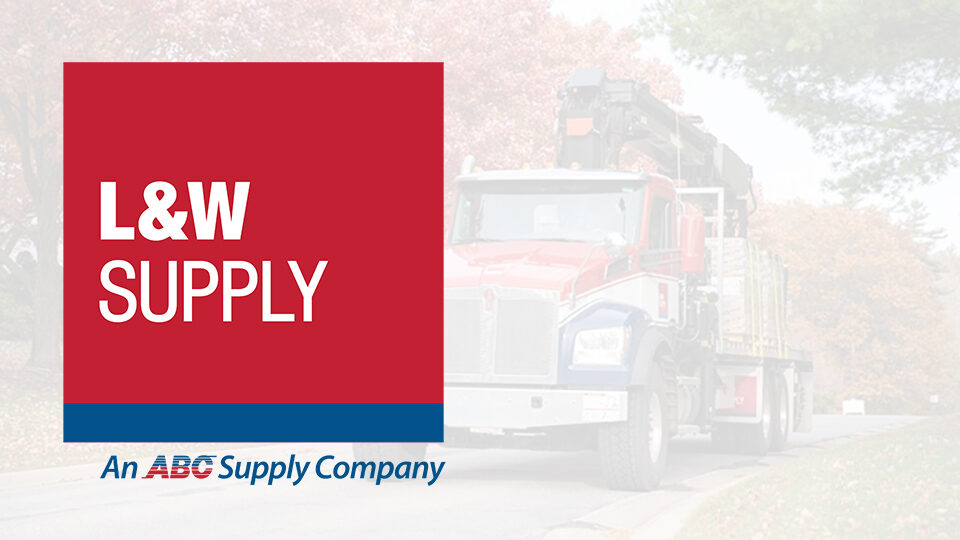
Best Practices for Jobsite Safety
Jobsites are very dynamic places, and navigating them safely requires a good amount of preparation, awareness and experience. Whether you are in commercial or residential building, it is very important to familiarize yourself and your team on the list of procedures that are required in order to safely conduct yourselves while vising various jobsites.
At L&W Supply, we pride ourselves on our in-depth culture of safety, which extends to both our approach to training, as well as delivering and stocking our customer’s orders. Here are a list of general recommendations that we’ve developed over the years when it comes to jobsite safety.
1. Know the Jobsite and the Schedule
From a crowded city delivery to a narrow suburban street, stocking methods will vary greatly from job to job. In order to help ensure that you don’t encounter anything unexpected on a jobsite, it is important to consider details such as:
- Floor plan
- Job circumstance
- Geographical layout
- Dates of particular deliveries
- How traffic comes in and out of jobsite
- Potential weather and traffic concerns
Each build is slightly different, so it is key to familiarize yourself with the details of a jobsite before arriving at it with your team or with materials to be delivered.
2. Provide Safety Training
One of the most fundamental aspects of safety is comprehensive training and onboarding. By properly training your associates before they arrive at the jobsite, you can help prevent the majority of safety incidents that can occur. With workshops, training videos, quizzes and in-person sessions, you can help reinforce the knowledge of your team members and even reward their participation.
At L&W Supply, training is a big part of our organization. Everybody – even experienced associates – are expected to refresh their knowledge of standard safety procedures by attending training sessions throughout the year. We also ensure that associates are given proper training with on-site equipment and PPE, along with the materials that they are tasked with delivering and stocking, bringing us to our next recommendation:
3. Practice Storing Materials Safely
In our industry, we move a lot of wallboard – along with steel, ceilings, and plenty of other building materials – and over the years, we’ve learned many best practices for storing and securing materials safely in order to avoid potential injury. Here are a few key tips:
- Stack materials flat whenever possible – avoid leaning stacks against walls.
- When it isn’t possible to stack flat, be sure to measure the distance between the materials and the wall to ensure proper lean. Placing drywall sheets against a wall with a lean of less than four inches creates a serious tipping hazard.
- Don’t limit access to rooms or floors with materials – keep entrances clear.
- Try to avoid having materials delivered far in advance of hanging or installation.
- Don’t lean a different length against other drywall. A big concern for tipping is when a sheet is pulled out from behind the front stack.
- Explore the benefits of drywall safety products, such as Rocksteady clips, for securing a stack of drywall.
4. Consider Using a Drywall Safety Product

Rocksteady Drywall Safety Clip
A product like the Rocksteady Clip can help mitigate risk by securing vertical stacks of drywall. Products like these help prevent accidental stack tip-overs by securing wallboard against a wall.
5. Build a Culture of Safety
If workers cut corners in order to meet deadlines or get jobs done faster, this is when mistakes happen. Mistakes lead to injuries, work delays, material loss and an overall impact on the job’s performance. At the end of the day, nothing is more important than the safety and well-being of you and your team.
“At L&W Supply, we pride ourselves on keeping our commitment to safety at every level of our organization,” says Jake Gress, Vice President of Operations. “This not only involves keeping up to date with training materials and certifications, but also following an entire culture of safety, from the way we plan deliveries to the way we execute projects.”
What we have learned over the years is that the key component to safety is having a team that embraces this culture of safety. This does not happen overnight, however. Careful review of you and your team’s performance and potential shortcomings is an important way to maintain and improve safety.
Schedule a debriefing when a project is complete. This will allow you to gauge how your team felt throughout the job and what can be improved upon in the future. Potential questions include:
- What went well?
- What should we make sure to do again in the future?
- What issues did we run into and how can we avoid them in the future?
We hope that you and your team find these recommendations to be helpful. Ultimately, L&W Supply’s main goal is to ensure that every single worker gets home safely at the end of the day. We believe it is just the right thing to do, for both our customers and our associates. To learn more about our industry-leading commitment to safety, visit this page: https://lwsupply.com/about-us/safety/
The information provided is for general informational purposes only. All information provided is in good faith, and is not intended as a substitute for obtaining accounting, tax, legal, or financial advice from a professional accountant or lawyer. Any opinions expressed are those of the author. L&W Supply makes no warranties of any kind, express or implied, regarding, the accuracy, adequacy, validity, reliability, availability, or completeness of any information provided herein. Any questions regarding the information provided should be addressed to the author.

L&W Supply Announces North Atlantic Region Realignment and Promotions
Bill Withers and Ryan Donegan promoted to district managers to support regional growth BELOIT, WI — December 9, 2025 — L&W Supply, one of the nation’s leading distributors of interior building materials and construction supplies, has announced the promotions of Bill Withers and Ryan Donegan to district manager roles within its realigned North Atlantic Region […]

L&W Supply Announces New President
Frank Marcoccio will succeed Dan Piché as president of L&W Supply, effective January 1, 2026 BELOIT, WI — October 1, 2025 — ABC Supply Co., Inc., announced Frank Marcoccio will succeed Dan Piché as president of L&W Supply, a nationwide wholesale distributor of interior building materials and construction supplies. This transition will be effective January 1, […]